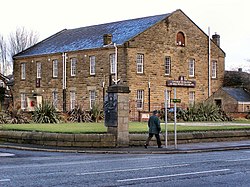| Wellington Barracks | |
|---|---|
| Bury | |
 The Regimental Headquarters at Wellington Barracks | |
| Site information | |
| Type | Barracks |
| Owner | Ministry of Defence |
| Operator | |
| Location | |
| Coordinates | 53°35′17″N2°19′18″W / 53.58811°N 2.32167°W |
| Site history | |
| Built | 1845 |
| Built for | War Office |
| In use | 1845-1968 |
| Garrison information | |
| Occupants | Lancashire Fusiliers |
Wellington Barracks was a military installation on Bolton Road in Bury, Greater Manchester.
